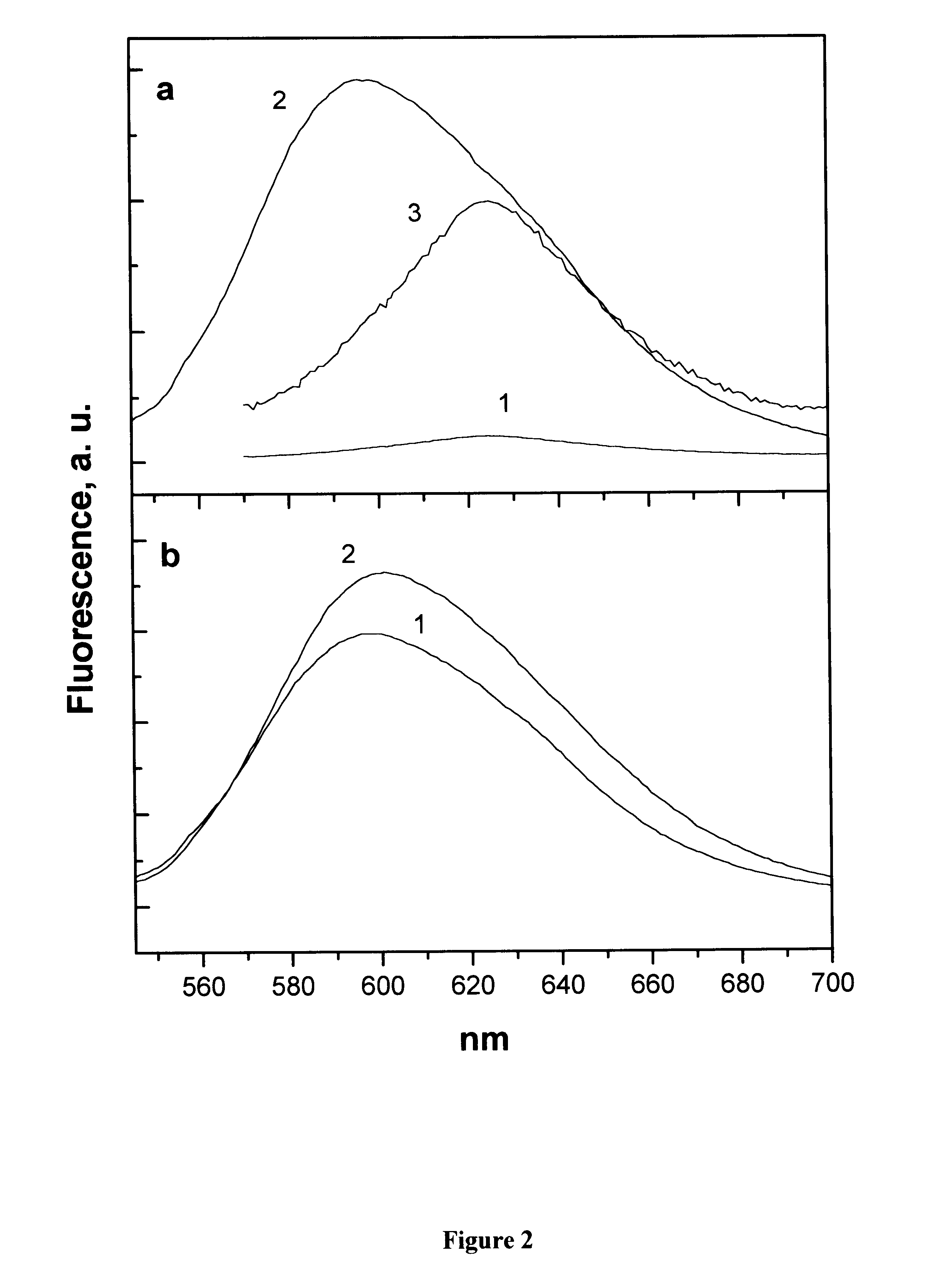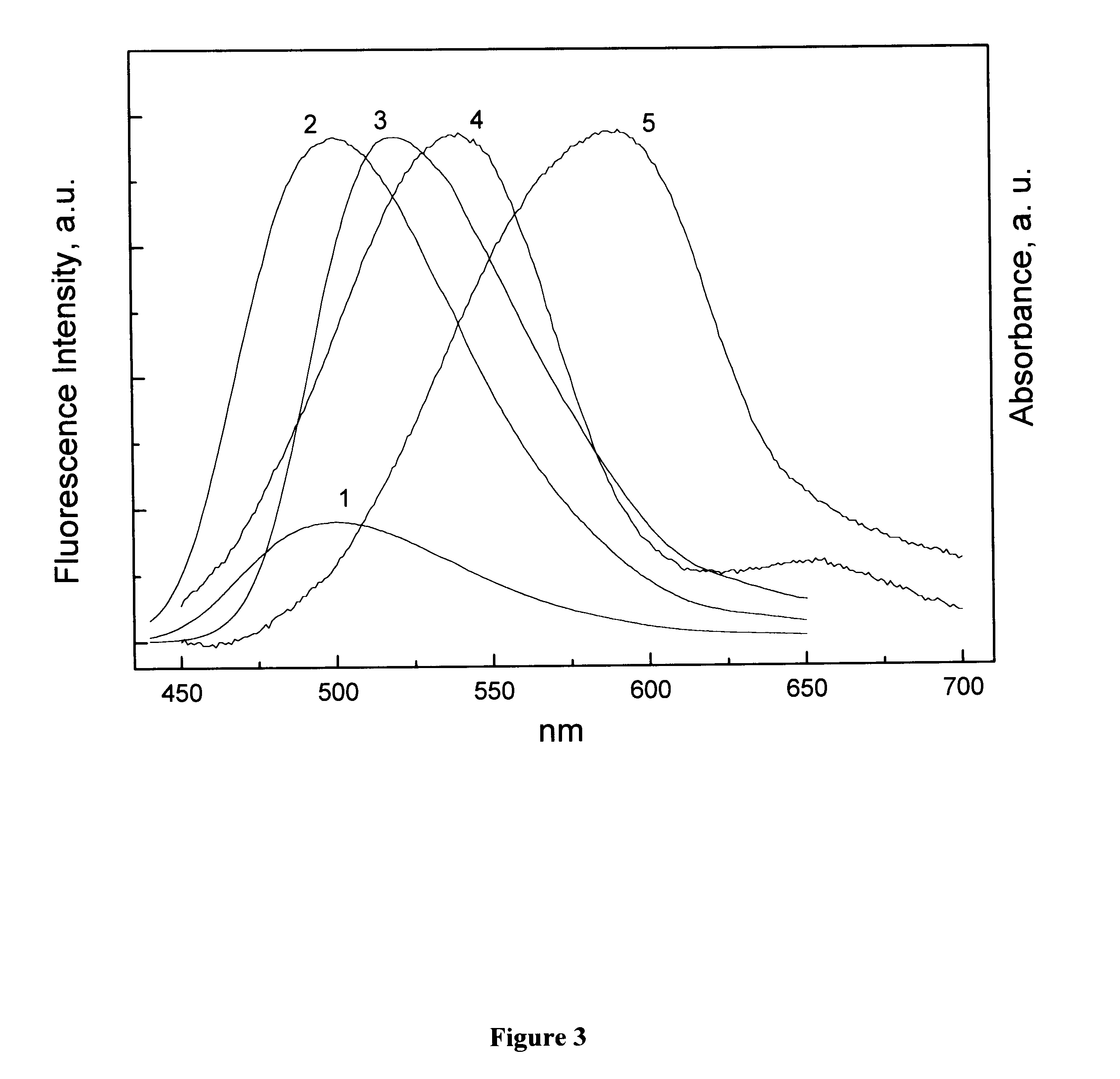Method of signal amplification in multi-chromophore luminescence sensors
a multi-chromophore and luminescence sensor technology, applied in the direction of fluorescence/phosphorescence, instruments, material analysis, etc., can solve the problems of complex laboratory equipment and traditional methods of quantitative detection of analytes based on gas chromatography and mass spectrometry, and achieve the effect of improving the performance of chemical sensors of analyte molecules
- Summary
- Abstract
- Description
- Claims
- Application Information
AI Technical Summary
Benefits of technology
Problems solved by technology
Method used
Image
Examples
Embodiment Construction
The invention provides a new method in the field of luminescence based sensors employing energy transfer effect between donor and acceptor chromophores that considerably increase the response signal with respect to a mono chromophore sensor. This approach can be applied to any bi- or multichromophore sensors for detection of analyte molecules in gases or liquids. The proposed general method can be used for the design of many different fluorescence-based sensory devices.
The proposed method of the signal amplification in the bi- and multichromophore sensors can be explained using the following quantitative model.
Let us consider the fluorescence enhancement as a mechanism of the signal transduction, however the same approach can be applied to the fluorescence quenching. Sensitivity and intensity of a sensor signal can be introduces as S=I / I.sup.0 and I, respectively, where I.sup.0 and I are fluorescence intensities prior and after analyte exposure. Then for mono-chromophore system bala...
PUM
| Property | Measurement | Unit |
|---|---|---|
| excitation wavelength | aaaaa | aaaaa |
| excitation wavelength | aaaaa | aaaaa |
| distance | aaaaa | aaaaa |
Abstract
Description
Claims
Application Information
 Login to View More
Login to View More - R&D
- Intellectual Property
- Life Sciences
- Materials
- Tech Scout
- Unparalleled Data Quality
- Higher Quality Content
- 60% Fewer Hallucinations
Browse by: Latest US Patents, China's latest patents, Technical Efficacy Thesaurus, Application Domain, Technology Topic, Popular Technical Reports.
© 2025 PatSnap. All rights reserved.Legal|Privacy policy|Modern Slavery Act Transparency Statement|Sitemap|About US| Contact US: help@patsnap.com



